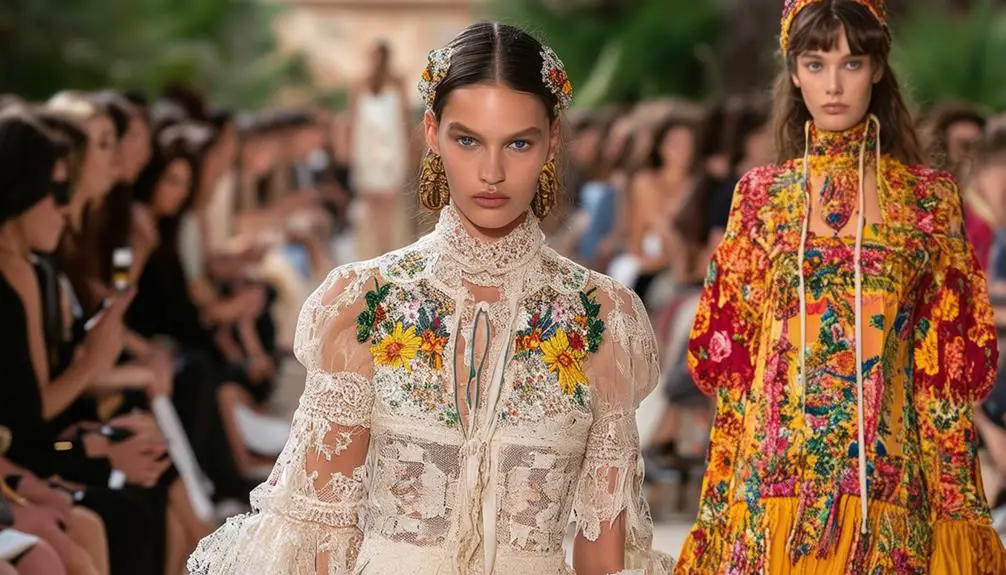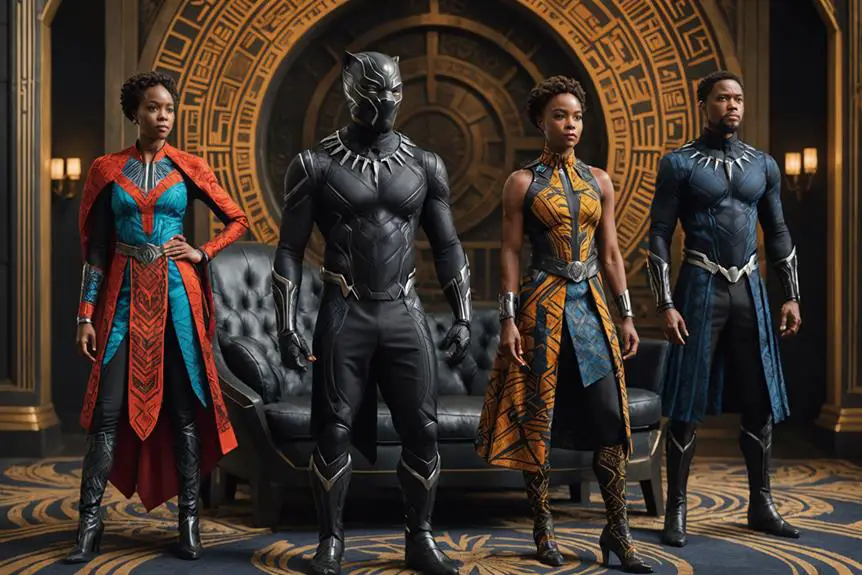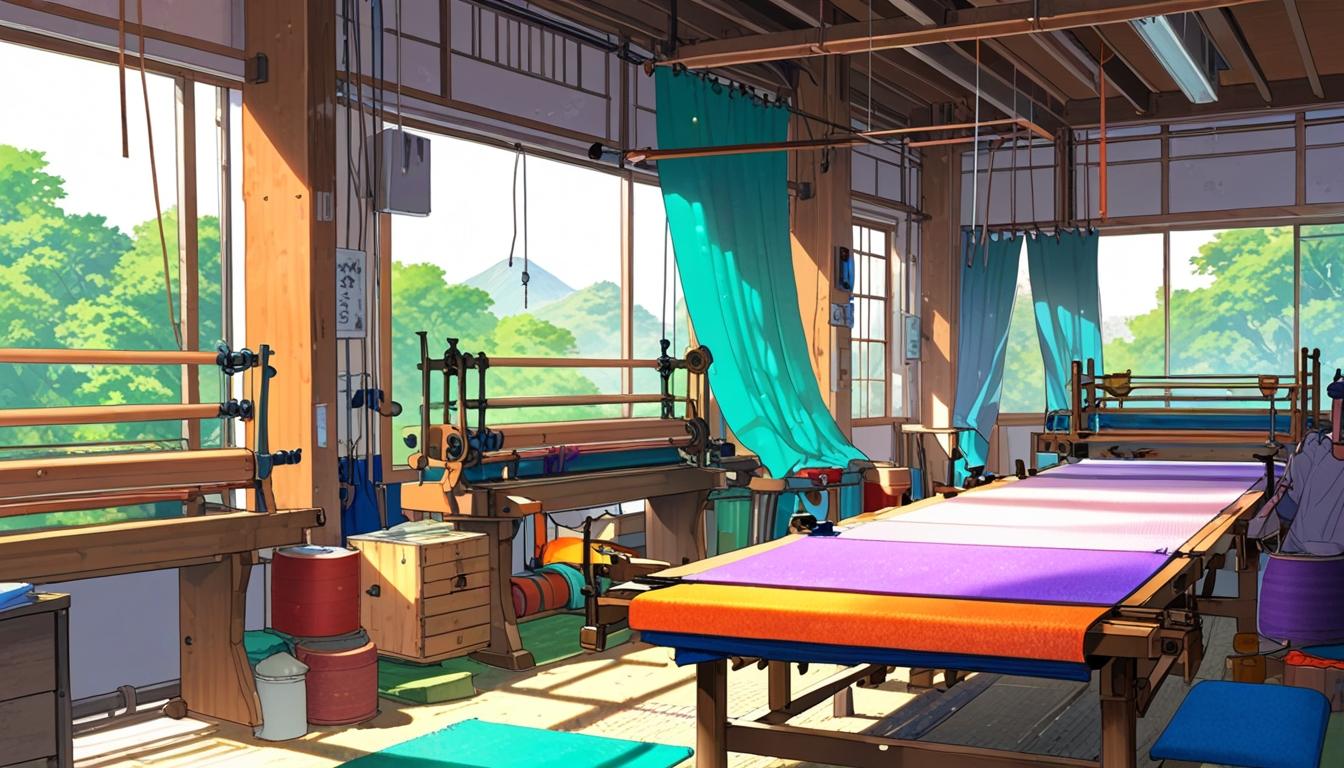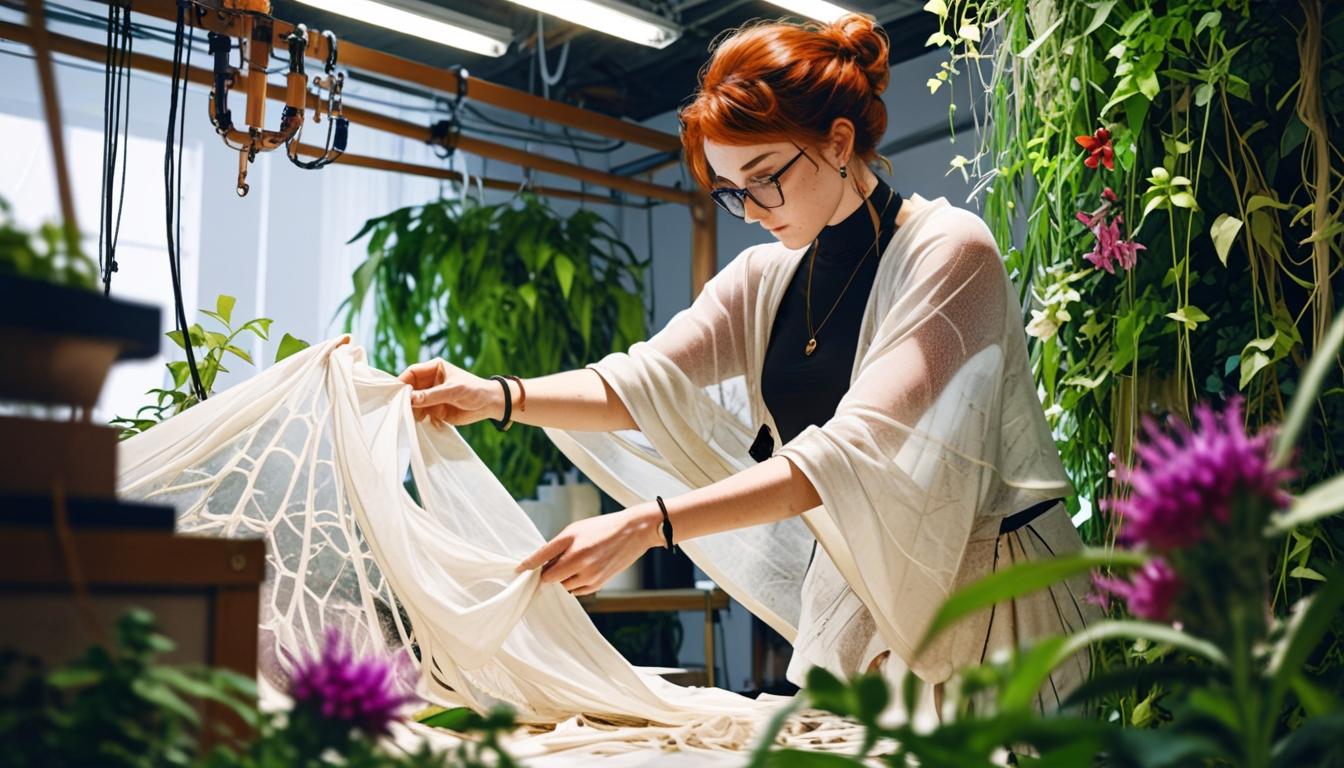Dolce & Gabbana, established in 1985 by Domenico Dolce and Stefano Gabbana, swiftly emerged as a pivotal player in the realm of luxury fashion. Their inaugural womenswear collection made its debut at Milan Fashion Week, setting the stage for daring designs and a celebration of cultural authenticity. The brand's ascent was propelled by iconic collections that embraced the allure of the Mediterranean, alongside the introduction of D&G, a line aimed at younger audiences. Strategic partnerships with influential figures such as Madonna and Kim Kardashian highlighted their significant cultural impact. Over the years, Dolce & Gabbana has broadened its portfolio, expanding from menswear to haute couture. Explore how their distinctive vision continues to influence the fashion landscape today.
Founding Years

The inception of Dolce & Gabbana in 1985 marks a pivotal moment in fashion history. Founded by Domenico Dolce and Stefano Gabbana, the brand emerged from their shared vision and passion for design, ignited during their time studying fashion in Milan. Their first womenswear collection debuted at Milan Fashion Week the same year, signaling their ambitious entry into an industry that thrived on innovation and creativity.
In 1986, they opened their first store in Milan, creatively using friends as models due to budget constraints, which reflected their resourcefulness. This grassroots approach didn't hinder their vision; rather, it emphasized their commitment to authenticity. Their Spring/Summer 1986 collection, titled "Geometrissimo," showcased groundbreaking designs and captured the attention of fashion critics, helping establish their reputation as forward-thinking designers.
Rise to Fame
By the early 1990s, Dolce & Gabbana had firmly established themselves as a formidable force in the fashion industry, thanks to a series of strategic moves that amplified their visibility and influence. Their journey began with a stunning runway debut at Milan Fashion Week in 1985, where they showcased their first womenswear collection. This collection, titled "Geometrissimo," launched in Spring/Summer 1986, was pivotal, capturing the attention of critics and consumers alike.
The brand's recognition soared after winning the prestigious Woolmark Prize in 1991, solidifying their reputation among top fashion houses. Collaborating with pop icon Madonna for her "Girlie Show" tour costumes in 1993 further elevated their profile, blending the worlds of fashion and music seamlessly. In 1994, the launch of the D&G brand allowed them to connect with a younger audience, expanding their market reach.
Here's a quick overview of their rise:
| Year | Milestone | Significance |
|---|---|---|
| 1985 | First womenswear collection | Established fashion identity |
| 1991 | Woolmark Prize win | Credibility in fashion houses |
| 1994 | Launch of D&G brand | Broadened audience appeal |
Iconic Collections
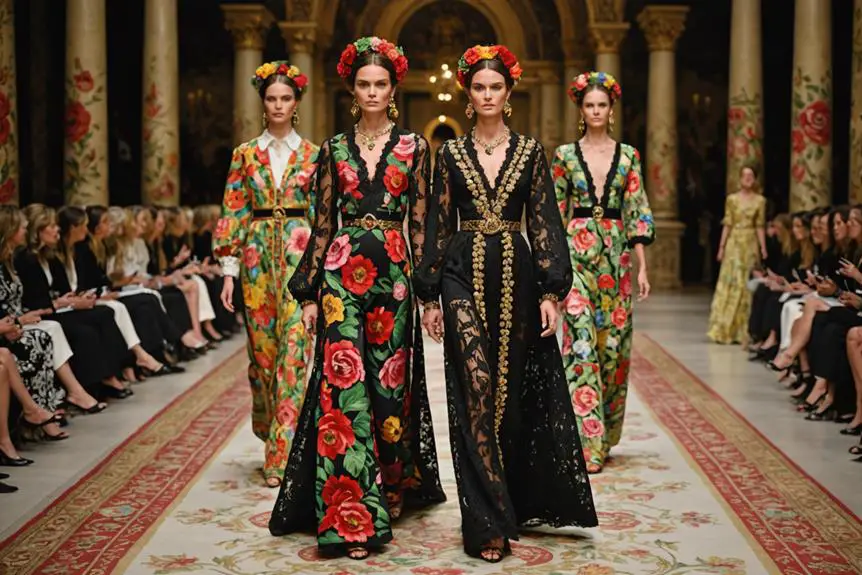
Throughout their illustrious career, Dolce & Gabbana has revealed numerous iconic collections that not only reflect their creative vision but also resonate deeply with cultural themes and personal stories. Each collection showcases their unique ability to blend tradition and modernity, offering a glimpse into their rich Italian heritage.
Consider these standout collections:
- Sensuality (1992): Focused on the allure of the Mediterranean woman, encapsulating their provocative style.
- Sicily (1997): Celebrated Sicilian roots, featuring traditional Italian designs that solidified their cultural identity.
- Alta Moda (2012): Marking their 25th anniversary, it celebrated exquisite craftsmanship at historic landmarks.
- Alta Sartoria (2016): Emphasized tailored luxury and artisanal techniques, honoring the brand's 30-year legacy.
- Tropico Italiano (2016): A vibrant collection reflecting Italian cultural influences, continuing their established design formula.
These iconic collections not only highlight Dolce & Gabbana's innovative spirit but also their unwavering commitment to honoring their heritage. Each piece tells a story, inviting you to explore the intricate tapestry of Italian culture through the lens of high fashion.
International Expansion
As Dolce & Gabbana ventured beyond Italy's borders, they strategically positioned themselves in key international markets, marking a significant shift in the brand's trajectory. Their first fashion show in Tokyo in 1989 laid the groundwork for international expansion into the Asian market, capturing the attention of a new audience enthusiastic for luxury. By April 1990, the designers made their American debut at New York Fashion Week, establishing a showroom that solidified their presence in the competitive U.S. fashion scene.
In 1994, the launch of the D&G brand allowed them to target a younger demographic, broadening their reach and appealing to a diverse customer base. This innovative approach not only enhanced their global fashion status but also introduced a fresh identity under the Dolce & Gabbana umbrella. The partnership with A.C. Milan in 2004 further extended their influence, merging high fashion with sports apparel.
Collaborations and Partnerships
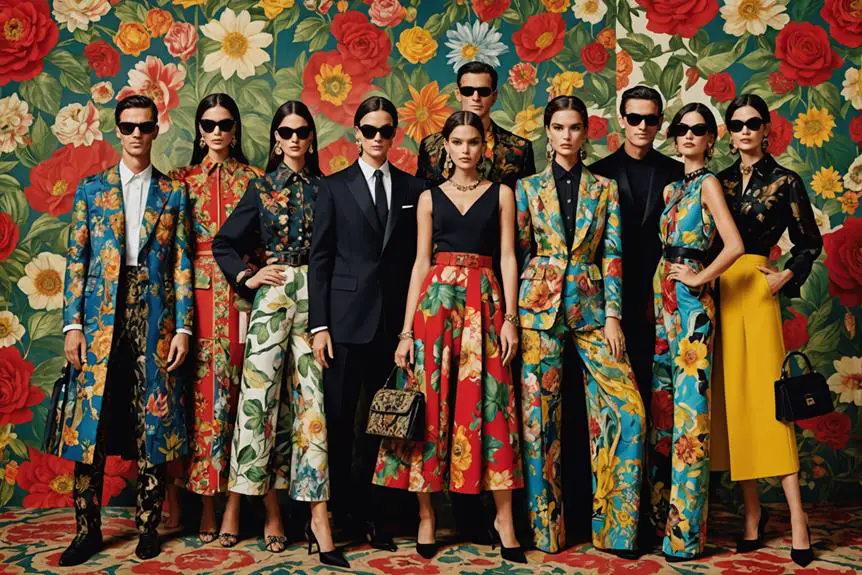
Dolce & Gabbana's collaborations and partnerships have played a crucial role in shaping the brand's identity and expanding its influence across various industries. By aligning with prominent figures and entities, they've carved a unique niche in both the fashion industry and contemporary pop culture.
Consider a few key collaborations:
- Madonna: Designed costumes for her "Girlie Show" (1993) and "Drowned World Tour" (2001), elevating their visibility in music.
- D&G Brand Launch: Introduced in 1994 to target a younger demographic, diversifying their market.
- A.C. Milan Partnership: In 2004, they blended fashion with sportswear, creating attire for both the football team and Italy's national team.
- Kim Kardashian Collaboration: Their 2022 collection with her aligned the brand with modern influencer marketing.
- Alta Moda Events: These events celebrate Italian heritage and craftsmanship through collaborations with local artisans and influencers.
Through these strategic partnerships, Dolce & Gabbana not only showcases their design prowess but also reinforces their relevance in an ever-evolving fashion landscape. Each collaboration reflects a commitment to innovation, ensuring they remain at the forefront of contemporary trends.
Cultural Influence
Fashion is more than just clothing; it's a reflection of culture, and Dolce & Gabbana has masterfully woven Italian heritage into its designs. By collaborating with high-profile celebrities like Madonna, who donned their creations during her iconic tours, the brand considerably shaped pop culture, showcasing Italian luxury on a global stage. Their advertising campaigns often highlight ordinary Italian men and women, promoting cultural authenticity that contrasts sharply with conventional fashion industry norms. Remarkably, similar to how vintage brands like Betty Barclay celebrated their roots, Dolce & Gabbana emphasizes its cultural heritage through its collections.
The "Sicilian" collection launched in 1987 serves as a prime example of how Dolce & Gabbana celebrates traditional Italian styles, resonating with Mediterranean aesthetics and embedding these cultural elements into the global fashion narrative. Furthermore, their Alta Moda fashion shows, held at historic landmarks, further emphasize the integration of local culture and heritage, enhancing the brand's cultural significance.
However, the brand's journey isn't without its pitfalls. The backlash from a culturally insensitive marketing campaign in 2018 serves as a stark reminder of the importance of cultural sensitivity in global fashion marketing. Overall, Dolce & Gabbana's influence on fashion reflects a deep connection to its Italian roots, celebrating cultural authenticity while maneuvering the complexities of modern fashion.
Product Diversification
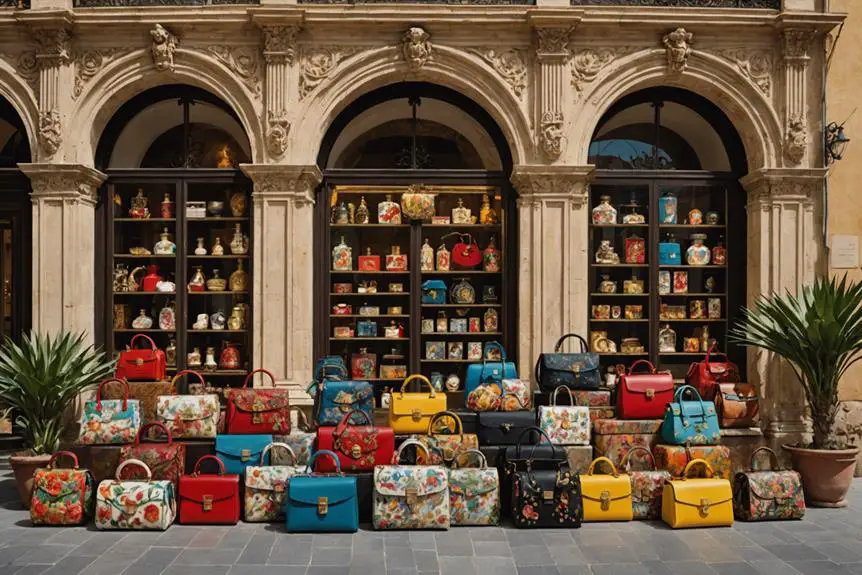
Building on its strong cultural foundation, the brand recognized the need to diversify its product offerings to remain relevant in a competitive market. Dolce & Gabbana's journey into product diversification has considerably expanded its range of products, allowing it to capture diverse consumer interests and preferences.
Key milestones in this evolution include:
- Launching the first menswear collection in 1990, marking a pivotal expansion beyond women's fashion.
- Introducing an Underwear Line in 2000, distinct from their lingerie collection, to further diversify offerings.
- Entering the cosmetics market in 2009, featuring Scarlett Johansson to drive attention toward their beauty products.
- Creating award-winning fragrances like The One and Light Blue, showcasing their commitment to innovation in product diversification.
- Collaborating with Smeg in 2016 to produce kitchen appliances with Sicilian-themed designs, enhancing their product portfolio.
Alta Moda
In 2012, Dolce & Gabbana launched Alta Moda, a high-end fashion line that redefined luxury through the lens of Italian artisanship. This initiative celebrated the brand's 25th anniversary and showcased exclusive designs in historic locations across Italy. You'd notice that each collection emphasizes traditional craftsmanship, utilizing luxurious fabrics that elevate haute couture to an art form.
The inaugural Alta Moda show was a visual feast, presenting garments that told stories of Italy's rich cultural heritage. In 2013, the collection was disclosed in Milan, drawing inspiration from iconic city symbols, further embedding the brand within the cultural tapestry of the nation. The 2014 show in Capri uniquely intertwined fashion with Impressionist art, illustrating how Dolce & Gabbana consistently merges different artistic domains.
Fast forward to 2021, when the Alta Moda event celebrated Venice's 1600th anniversary. This collection, showcased at historical sites, marked a decade-long commitment to haute couture, reinforcing the brand's dedication to artistry and exclusivity. Through Alta Moda, you witness the embodiment of Italian elegance and craftsmanship, making each piece not just clothing, but an indication of a rich cultural narrative.
Recent Developments
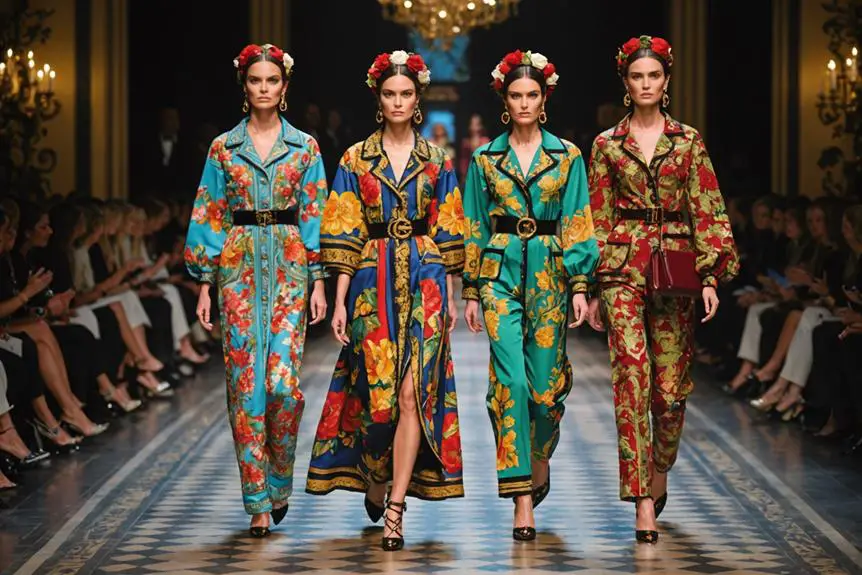
Recent developments at Dolce & Gabbana reflect a dynamic blend of tradition and innovation, showcasing the brand's adaptability in a rapidly evolving fashion landscape. In recent years, you've seen how the brand has embraced contemporary trends while staying true to its Italian roots. Here are some key highlights:
- In 2021, Dolce & Gabbana celebrated the 10th anniversary of their Alta Moda collection in Venice, emphasizing their commitment to Italian craftsmanship.
- That same year, the launch of the Collezione Genesi NFT marked a bold entry into blockchain technology, highlighting their focus on innovation.
- At the 2023 CNMI Sustainable Fashion Awards, the brand received the Craft and Artisanship Award, underlining its dedication to sustainability and craftsmanship.
- Collaborating with Kim Kardashian in 2022, they successfully tapped into the world of contemporary cultural icons, broadening their market reach.
- Following the controversies of late 2018, the brand revamped its marketing strategies to emphasize cultural sensitivity, resulting in a notable resurgence in social media engagement.
These recent developments not only demonstrate Dolce & Gabbana's innovative spirit but also reflect their ongoing commitment to collaboration and authenticity in the fashion industry.
Brand Philosophy
What defines the nature of Dolce & Gabbana's brand philosophy is its vibrant celebration of femininity and Mediterranean culture. You'll notice how founders Domenico Dolce and Stefano Gabbana have carved out a distinct identity, intentionally contrasting the minimalism that dominated the 1990s fashion landscape. Their designs radiate bold colors and intricate embellishments, showcasing a luxurious and provocative aesthetic that pays homage to traditional Italian craftsmanship.
This design consulting studio emphasizes cultural sensitivity, especially after previous controversies. By actively engaging with diverse model representations in their campaigns, they aim to foster a more inclusive narrative. This commitment to understanding and respecting cultural nuances is integral to their brand identity.
Dolce & Gabbana's work reflects not only a romantic imagination but also a deliberate choice to maintain its Italian roots. Their rejection of acquisition offers underscores their dedication to preserving the brand's authenticity. In summary, the brand philosophy is about more than just fashion; it's a passionate dialogue between culture and identity, inviting you to embrace the rich tapestry of Italian heritage while celebrating the strength and allure of femininity.
Frequently Asked Questions
Why Did Dolce and Gabbana Go to Jail?
Dolce and Gabbana faced jail time due to a tax evasion conviction, where they improperly declared income. This case spotlighted financial practices in fashion, raising questions about corporate accountability and the consequences of legal infractions.
Are Dolce and Gabbana Still a Couple?
No, Dolce and Gabbana aren't a couple anymore. They ended their romantic relationship in 2005 but continue to work together as business partners, creatively shaping their brand while maintaining a strong professional bond.
How Did Dolce and Gabbana Get Big?
Dolce & Gabbana became big by creating distinctive designs that blended Italian heritage with modern flair. Their strategic collaborations, innovative collections, and presence in high-profile fashion events captured attention and solidified their status in luxury fashion.
What Does Dolce and Gabbana Symbolize?
Dolce & Gabbana symbolizes Italian luxury, vibrant sensuality, and cultural heritage. You'll find bold designs that celebrate femininity and Mediterranean allure, reflecting a unique blend of craftsmanship and provocative style that captivates the modern fashion world.
